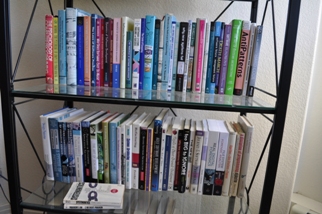Author Archive: bfwebster
Webster is Principal and Founder at at Bruce F. Webster & Associates, as well as an Adjunct Professor for the BYU Computer Science Department. He works with organizations to help them with troubled or failed information technology (IT) projects. He has also worked in several dozen legal cases as a consultant and as a testifying expert, both in the United States and Japan. He can be reached at 303.502.4141 or at bwebster@bfwa.com.
Some thoughts on “Up or Out”

[UPDATE: Here are some more observations from Ruby-coloured glasses.] Alex Papadimoulis over at The Daily WTF (one of my favorite IT blogs) has posted a lengthy and thoughtful solution to the problems I raised in my post on the “Dead Sea effect“. Specifically, he refers to the “Up or Out” model, pioneered over a century […]
The Wetware Crisis: the Expert Pool

[Note: I originally wrote about this concept in my first edition of The Art of ‘Ware and was going to include it in version 2.0 of that book. However, my review of the most recent translations of the oldest manuscripts of Suntzu pingfa has led me to re-interpret the maxims for that section. As a […]
Negotiations and Lovesongs: Introduction

[Copyright 2008 by Bruce F. Webster. All rights reserved. Adapted from Surviving Complexity (forthcoming).] Two disappointed believers, Two people playing the game. Negotiations and love songs Are often mistaken for one and the same. — “Train in the Distance”, Paul Simon I used to have arguments with Carol Teasley, one of my mentors, regarding software […]
The Wetware Crisis: the Thermocline of Truth

[Updated 09/12/13 — fixed some links and added a few.] [Copyright 2008 by Bruce F. Webster. All rights reserved. Adapted from Surviving Complexity (forthcoming).] A thermocline is a distinct temperature barrier between a surface layer of warmer water and the colder, deeper water underneath. It can exist in both lakes and oceans. A thermocline […]
The Longest Yard: Reorganizing IT for Success

[This is an article that Ruby Raley and I co-authored and that was printed in the September 2006 issue of the Cutter IT Journal. Space was limited, so we had to be rather terse throughout. Ruby and I may well expand this to significantly greater length later, but for now, here’s the original article as […]

